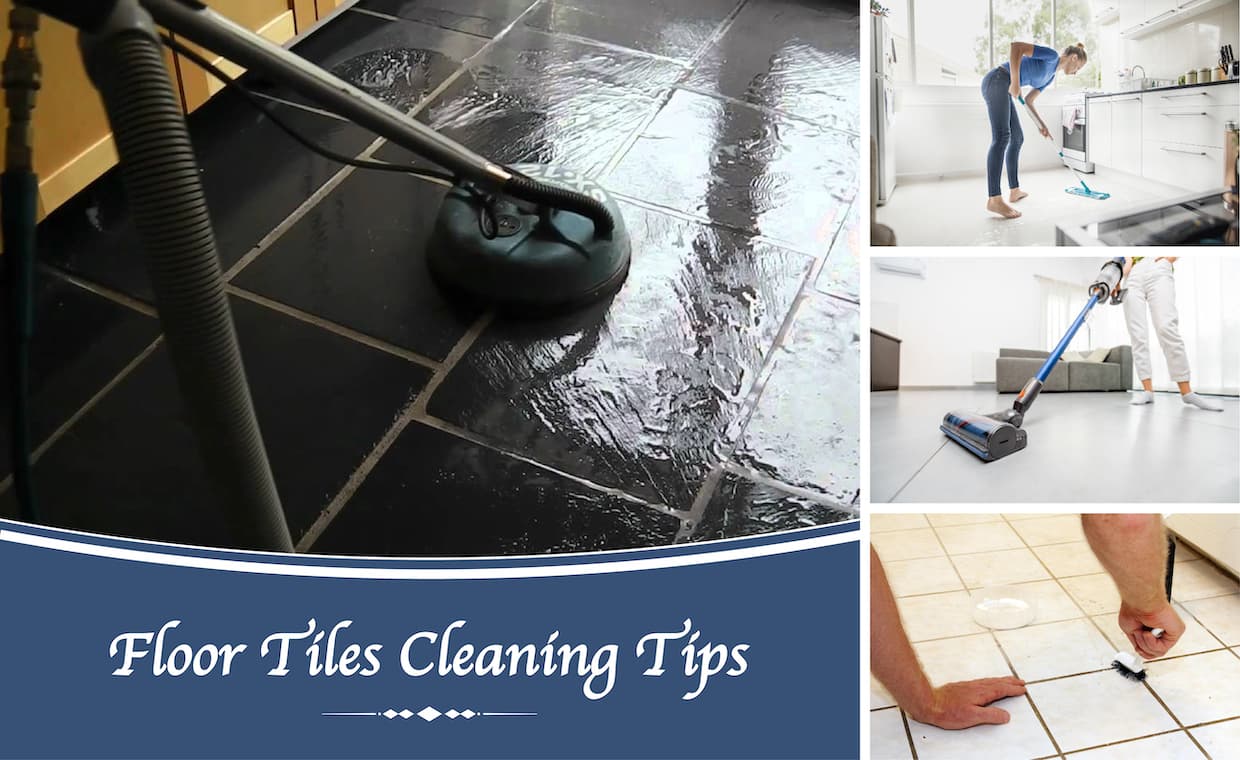
Irrespective of whatever flooring you opt for, sooner or later it’s going to turn dirty, fade or catch grime. The solution to this lies in good maintenance. Gharpedia will guide you how to shine floor tiles again through below content.
When we buy a house it looks so awesome doesn’t it? Welcoming façade, shining walls, glossy windows, aesthetic doors, state-of-the-art interior décor and sparkling flooring… But time takes its toll and the first to fall victim to time is the flooring which starts looking jaded, worn-out and grimy.
Well one cannot afford to ignore revamping the flooring for the simple reason that flooring is a key player when it comes to the interior design of a house as it can easily make or break your space. Albeit our first interaction with a house is visual, but the first physical connect that we have is with the flooring … moreover it also serves as a foundation on which the entire house and the interior décor rests!
So what’s the solution to pep up your tiles and touch-up your flooring? Well, cleaning tile floors irrespective of the material is one of the most effective and economic solutions.
Gharpedia shows you how to go about the same basis the flooring.
Cleaning Tips – For Various Types of Floors
Undoubtedly tile floors are extremely durable, yet different kinds of tiles need to be cared for in a different way. When it comes to ceramic and porcelain floor tiles, they are relatively low maintenance; but coarse tiles like slate, marble, granite, or limestone call for individualized care and often specific tiles cleaners. Let’s take you through the basics:
01. Stone Tile Floors Cleaning
A wise thing to remember is that chemicals in traditional cleaners can damage the surface of slate, granite or marble floors. So the best thing to do with such floors would be to use cleaners specifically made for natural stone floorings.
- In case of slate tiles, a mild detergent sans acidic properties (lemon or vinegar) is fine. Dry them right away with a soft towel.

- Albeit marble lends a royal hue to your house yet no one can deny the fact that it comes with a high-maintenance value! So anything with an acidic pH level is an absolute no-no for cleaning your marble floor which rules out lemon or vinegar; also refrain from brushes with strong bristles or scouring powders as they may damage the surface of the marble.
- Granite tiles too should be cleaned with a pH-neutral detergent to ensure that the tiles don’t get streaked or discoloured.
02. Resilient Tile Floors Cleaning
These are floors which comprise of – linoleum, vinyl, cork and rubber; and are perhaps the best flooring option for those householders who aim for something that’s easy-on-the-feet and requires minimum maintenance. A good point to remember with these floors would be to refrain from using a steam mop as they cannot withstand extreme heat or excess moisture.
- In case of vinyl flooring, either sweep or vacuum the waste and mop the floor with a vinyl cleaning solution or water and vinegar. Abstain from abrasive cleaners or scrubbing tools to ascertain a scratch-free surface.

- For those houses with a linoleum floor, a practical cleaning suggestion post sweeping or vacuuming, it would be to wash the linoleum tile with linoleum flooring cleaning solution readily available in the market or Borax detergent and water. Expert Tip – Apply a layer of wax or liquid wax every six months to protect your linoleum flooring.

- For cork tiles, whose surface is sealed with polyurethane, washing them with water and mild detergent or white vinegar is recommended. In case of unfinished or waxed cork tiles wash them with water and mild detergent or white vinegar but do remember to apply solid or liquid wax once the tile dries.
03. Vitrified, Ceramic and Porcelain Tile Floors Cleaning
The best part about this flooring material is its long term durability; just imbibing a few maintenance techniques on a regular basis can retain their sparkle.
- Regularly sweep or vacuum your floor to keep the vitrified, ceramic or porcelain tiles from getting dull.
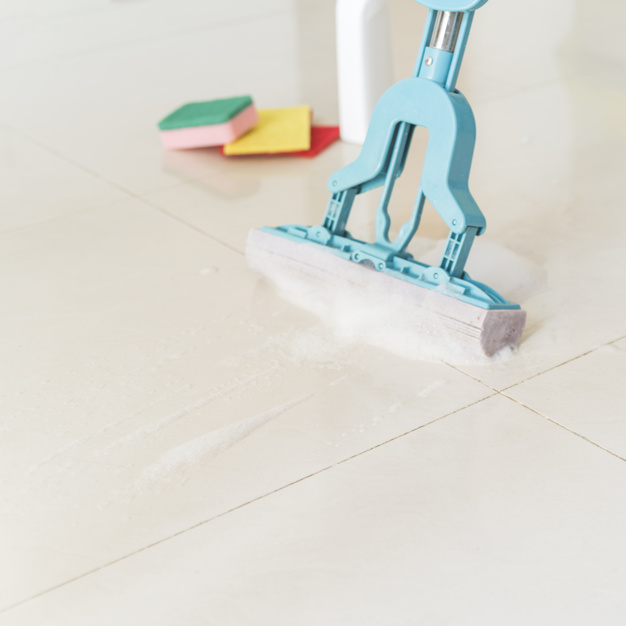
- Clean the tiles with a mild detergent and water.
- Refrain from sponge mops; instead opt for a rag or chamois-type mop. As the former tend to shove the dirty water in to the grout lines making them more difficult to clean.
- While mopping a frequent change of water is strongly recommended.
- In case of discoloured tiles, identify what substance has left the stain and then opt for an effective remedy for the same.
- In case your tiles look dull post cleaning also, then try removing the soapy residue with a homemade cleaner like fresh lemon juice (please don’t try this on stone tiles).

- Instead of letting your floor air-dry, clean it with a lint-free cloth.
04. Tile Grout Cleaning Secrets
Well, we all know this don’t we that it’s a clean grout which lends an attractive tint to a tiled floor. Although as the pores in the grout soak-in grease and other stains keeping them clean is a tad challenging. But relax Gharpedia has some pointers to ease your labour –
- Rub the stain with some cleaner, let it stay overnight, and then scrub the stain in the morning with a stiff nylon brush.
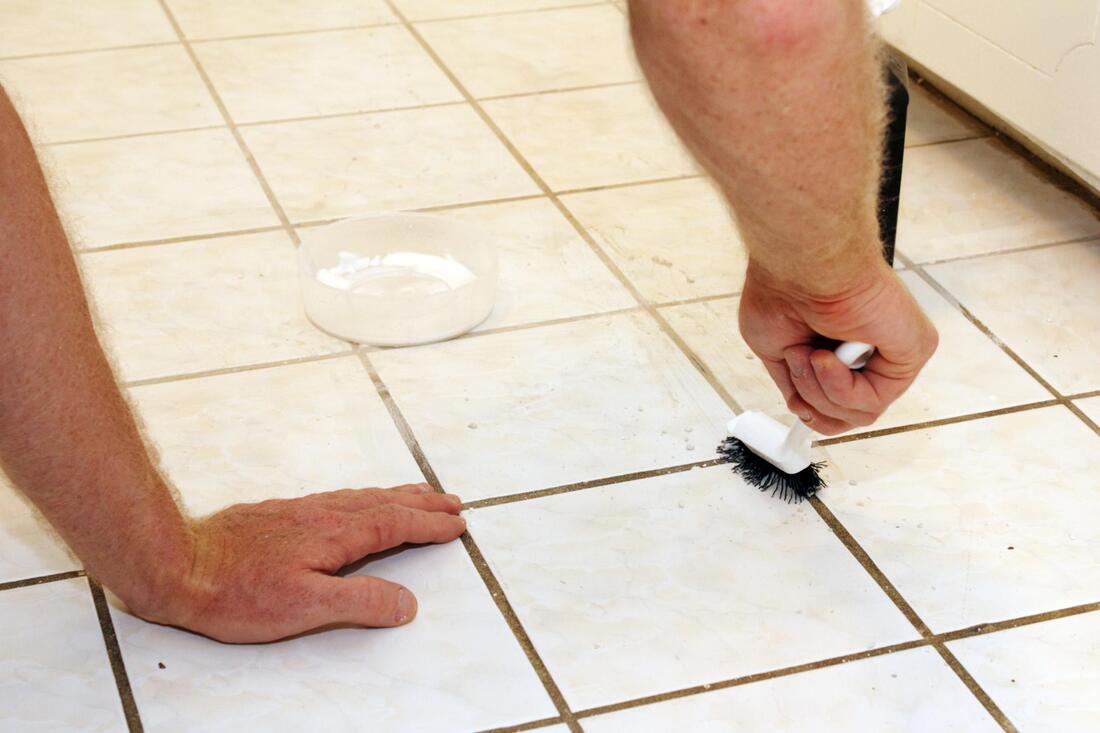
- With prevention being better than cure within a fortnight of installing or renewing the grout, apply a silicone-based sealer on it to repel future stains.
Expert Tip – Avoid using a steam mop if your floor is old or the grout is damaged in any way to nullify the chances of speeding up the damage and causing pitting and discoloration.
Ideal Frequency of Cleaning to Shine the Floor Tiles
All meticulous householders will agree that when it comes to keeping your floor clean there can’t be a fixed duration of cleaning as the floor gets dirty basis a number of factors – location (floors of houses in tropical countries need to be cleaned more frequently vis-à-vis their counterparts in cooler zones); season (rains and winds can ring in a lot of dirt); footfalls (during a get-together with more feet connecting to your floor chances of it getting dirty are hiked); children (the floor is a canvas for toddlers to leave their creative imprints, isn’t it!) et al.
But yes a regular tiles cleaning schedule – basically a combination of dry and wet cleaning – is a mandate to keep your tiles squeaky clean and free from grime. Here’s sharing how –
- Sweep or vacuum clean your house on a weekly basis and also when you see dirt. You can start with a soft-bristle vacuum attachment; and then deploy the hand broom and dustpan to cover the corners and tight spaces.
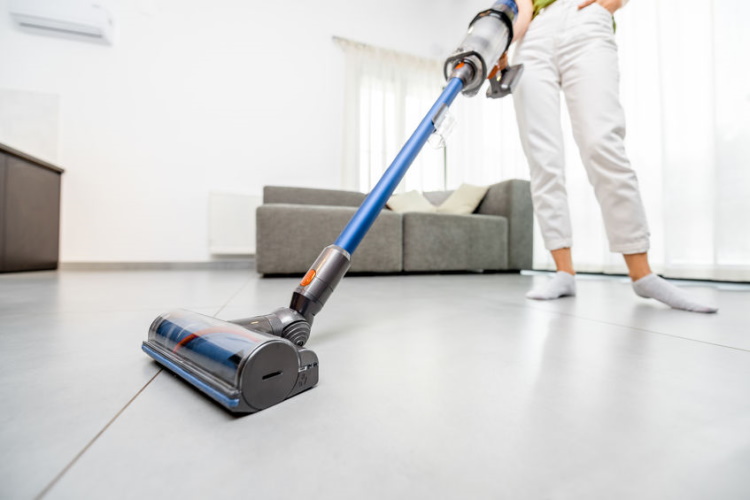
- Mop the tile floor in your kitchen once in every two weeks and in your bathroom on a weekly basis (as germs tend to build up in bathrooms). Cull out time to spot clean your grout once every few months.
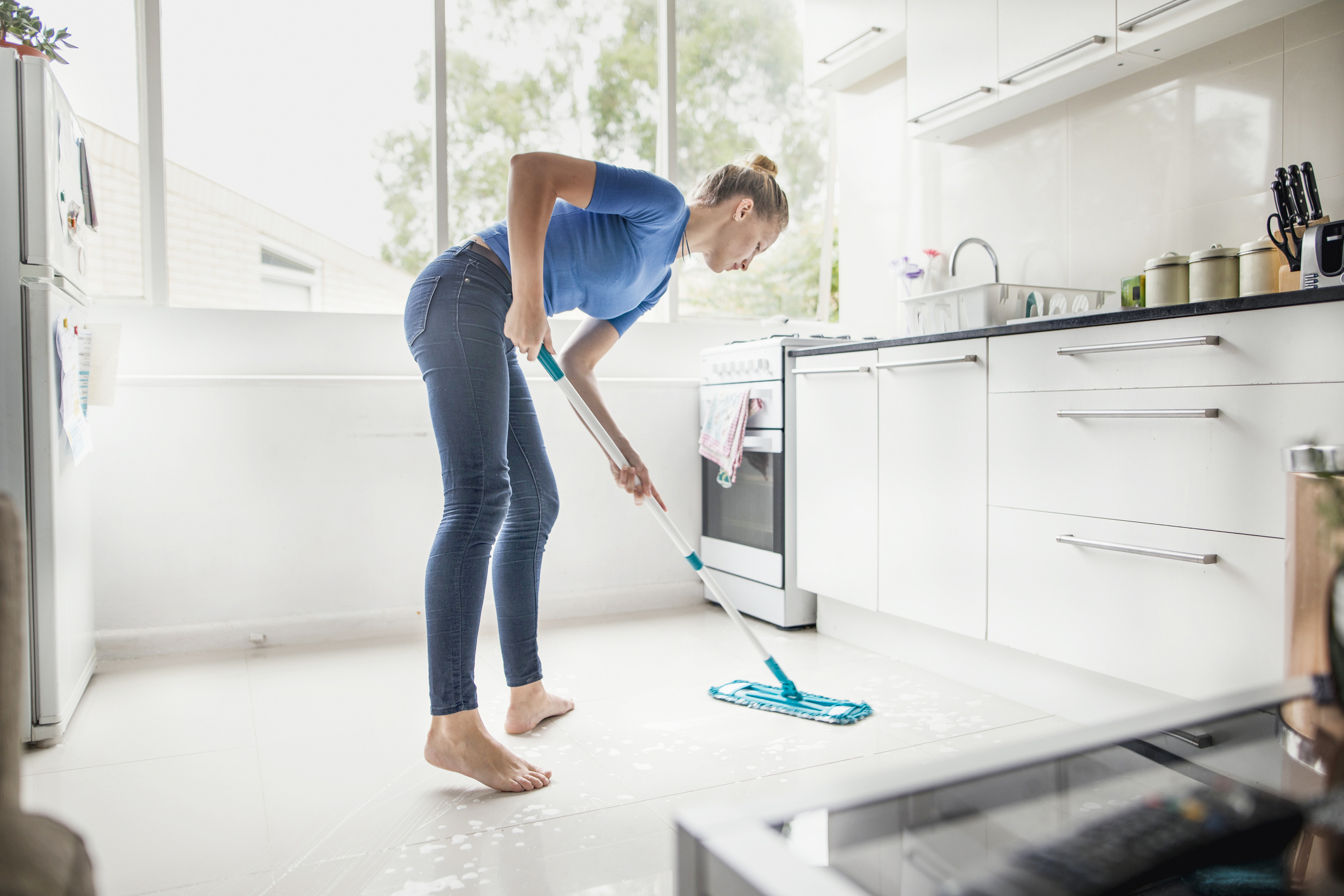
Alternatively if you have the resources or are easily and quickly assailed with déjà vu then you can simply opt for changing your flooring. But a good point to remember here is that irrespective of the flooring you select it will require some sort of effort from your end to keep them in spick and span shape!
In the End, whatever decision you take – whether to scrub your tiles or replace them do it ASAP before your flooring leaves a negative impression on your guests with regards to your household hygiene!
You may love to read below mentioned articles too:
15 House Cleaning Tips that can be Beneficial to Every Homeowner!
Top 11 Forgetful Places to Clean in Home in Your Next Cleaning Spree
Image Courtesy: Image 2, Image 3, Image 4, Image 6, Image 7, Image 8, Image 9
Author Bio
Huta Raval – An English Literature and Journalism Topper, Huta Raval has graduated from the L D Arts College, Ahmedabad. Post serving for 23 years in the NBFC and Public Library Sectors her desire for ‘writing the unwritten’ brought her to the creative field of content writing. Her clientele comprises of NGOs, Blogging Platforms, Newspapers, Academic Institutions, et al.
































